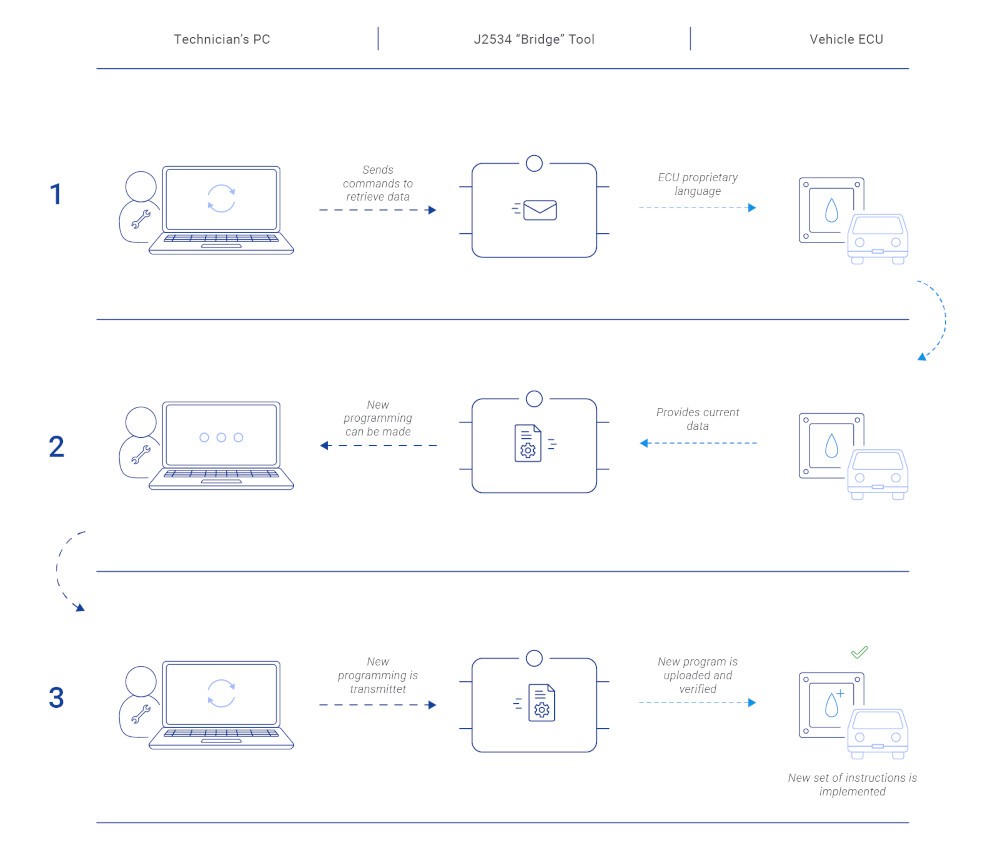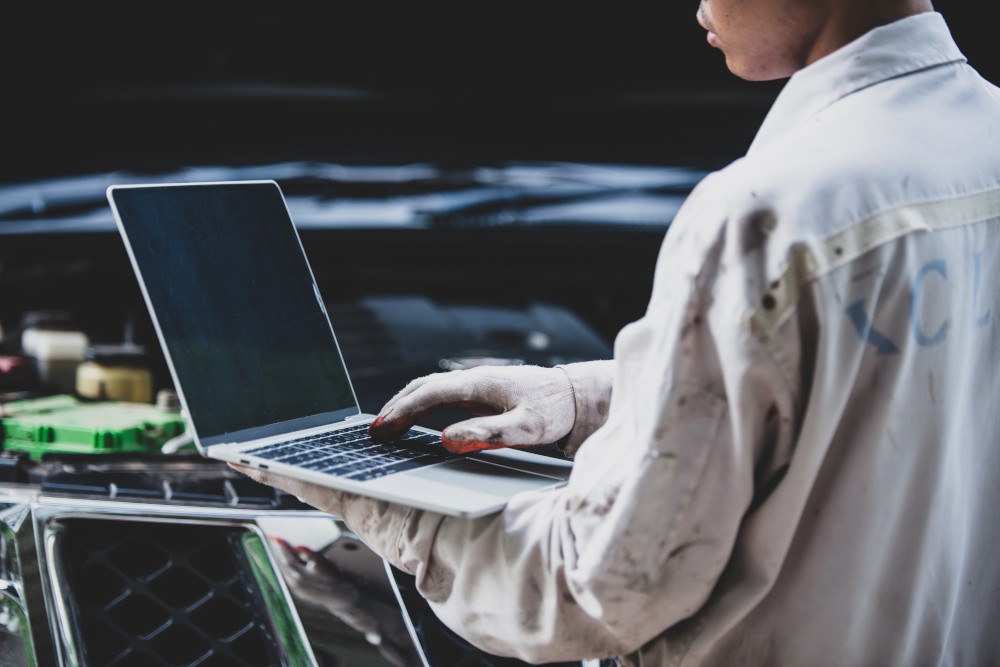The J2534 Device is revolutionizing how we diagnose and program vehicles. This comprehensive guide delves into the intricacies of J2534, explaining what it is, how it works, and its wide range of applications in the automotive industry. Whether you’re a seasoned mechanic or a car enthusiast, this article will equip you with a thorough understanding of this powerful technology.
What is a J2534 Device?
A J2534 device, adhering to the SAE J2534 standard, is a pass-thru interface that allows communication between a vehicle’s electronic control units (ECUs) and a computer running diagnostic or reprogramming software. This universal interface eliminates the need for manufacturer-specific tools, empowering independent repair shops and technicians to diagnose and reprogram vehicles of various makes and models. The J2534 standard ensures compatibility and cost-effectiveness in vehicle diagnostics and reprogramming.
How Does a J2534 Device Work?
The J2534 device acts as a translator between the diagnostic software on your computer and the vehicle’s ECUs. It connects to the vehicle’s OBD-II port and uses the J2534 API to communicate with the ECUs.
The process typically involves these steps:
- Connection: The J2534 device is connected to the vehicle’s OBD-II port.
- Communication Initialization: The J2534 software on the computer initiates communication with the device and the vehicle’s ECUs.
- Data Transfer: The device translates commands from the software into the language understood by the specific ECU and vice versa, enabling seamless data transfer.
- Diagnostics and Reprogramming: The software then uses this connection to read diagnostic trouble codes (DTCs), clear codes, reprogram ECUs, and monitor live data.
| Diagnostic Software | J2534 Pass-Thru Device | Vehicle ECU | Result |
|---|---|---|---|
| Sends a standard language command, e.g., “Retrieve the error codes.” | Interprets the command from the diagnostic software. | – | – |
| – | Converts the command into the proprietary language of the specific ECU. | – | – |
| – | Sends the translated command to the ECU. | Receives and processes the command. | – |
| – | – | Responds with error codes in its proprietary language. | – |
| – | Translates the ECU’s response into the standard language of the diagnostic software. | – | – |
| Receives and displays the translated response (error codes). | – | – | User now has access to the error codes of the vehicle. |
J2534-1 vs. J2534-2: Understanding the Differences
- J2534-1: This initial version provided basic diagnostic and reprogramming capabilities.
- J2534-2: This enhanced version offers broader protocol support, faster reprogramming speeds, and improved functionality for modern vehicles.
Practical Applications of a J2534 Device
J2534 devices find extensive use in various automotive applications, including:
- Reading and Clearing DTCs: Quickly diagnose and resolve vehicle issues by accessing and clearing error codes.
- ECU Reprogramming: Update vehicle software, fix bugs, and enhance performance through ECU flashing.
- Live Data Monitoring: Monitor real-time sensor data to analyze vehicle performance and identify potential problems.
- Customization: Tailor vehicle settings for specific needs and preferences through advanced reprogramming options.
Challenges and Considerations when Using a J2534 Device
While J2534 offers significant advantages, some challenges exist:
- Compatibility Issues: Not all vehicles are fully compatible with J2534. Always verify compatibility before use.
- Complexity: Using J2534 effectively requires technical knowledge and training.
- Software and Firmware Updates: Keeping software and firmware updated is crucial for optimal performance and compatibility.
Conclusion
The J2534 device is a powerful tool that is transforming the automotive industry. By understanding its functionalities, applications, and potential challenges, car enthusiasts and professionals can leverage this technology for enhanced diagnostics, reprogramming, and vehicle maintenance. As vehicle technology continues to advance, the J2534 standard will play an increasingly vital role in shaping the future of car repair and customization.



